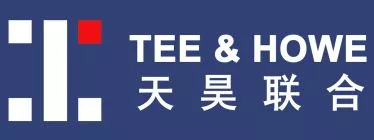- within Technology topic(s)
- with readers working within the Media & Information industries
- within Technology topic(s)
- with Inhouse Counsel
- in China
- with readers working within the Pharmaceuticals & BioTech industries
The Cyberspace Administration of China announced Methods for Identifying Synthetic Content Generated by Artificial Intelligence on 7 March 2025 at the link below:
https://www.cac.gov.cn/2025-03/14/c_1743654684782215.htm
These methods will be in force on 1 September 2025. The machine English translation of these methods should be readily accessible.
Essentially, these methods requireanycontent generated by AI to be properly labelled, main points to note (in my view) as below:
- The contents include text, images, audio, video, and virtual scenes (article 3).
- The label could be explicit or implicit (Article 3).
- Explicit labels are required for text, images, audio, video, and virtual scene, with specific requirements like at the start of a video.
- Implicit labels in the form of metadata are required for service providers (article 5, I presume for AI platforms like DeepSeek?), like online information content dissemination services (article 6, I presume for platforms like those of ecommerce, for example Taobao, or communication, for example WeChat).
- Article 7 recites "Internet application distribution platforms shall verify the materials related to the identification of their generated synthetic content." I am not sure what does this mean, and will be grateful for any insights. If this requires verification by, for example DeepSeek, for all contents generated therefrom, I really have no idea how this could be achieved.
- Article 13 sets out the punishment on violation of these methods. I am not familiar with any of the laws or regulations involved, and again will be grateful for any education.
As always, any comments are welcomed.
My view is that these methods would be a gamechanger for operation of AI platforms in China, particularly with respect to compliance. At this stage it is not clear how severe the punishment could be for violations of these methods. However, for AI platforms, which tend to be large, compliance is always an issue. Sadly, the Chinese environment is that there are so many law/rules/regulations, it is extremely difficult to achieve full compliance. My worry is that this may drive accessibility of AI out from China if these methods are strictly and heavily enforced.
One scenario I can think of is, if a patent attorney used AI to analyze and prepare a draft response to an office action/examination report (which there are such uses in China with DeepSeek), explicit label is required to be included in the response that the response is AI generated. Of course, the patent attorney could rephrase the entire response to try to avoid such labelling, but it would be interesting to see how this could develop.
The content of this article is intended to provide a general guide to the subject matter. Specialist advice should be sought about your specific circumstances.


